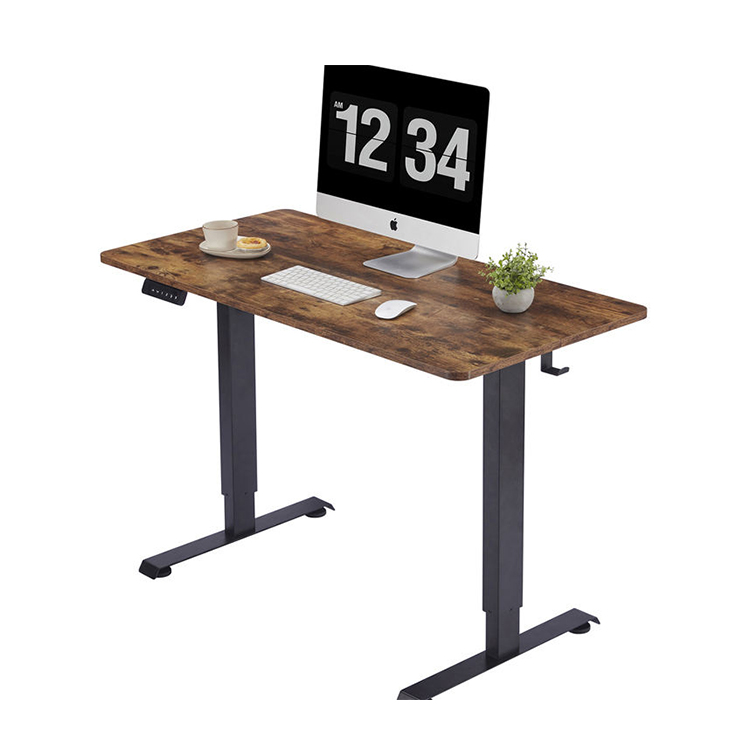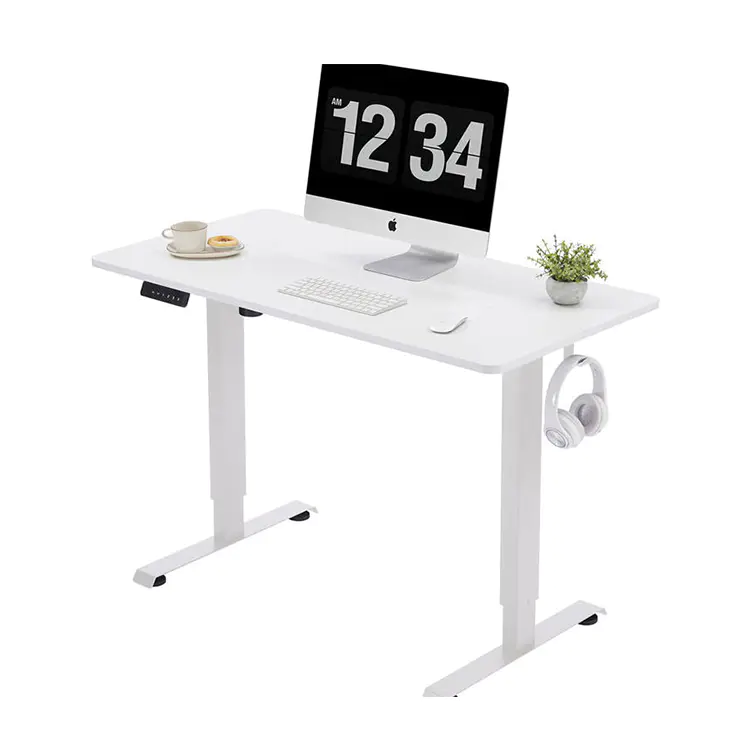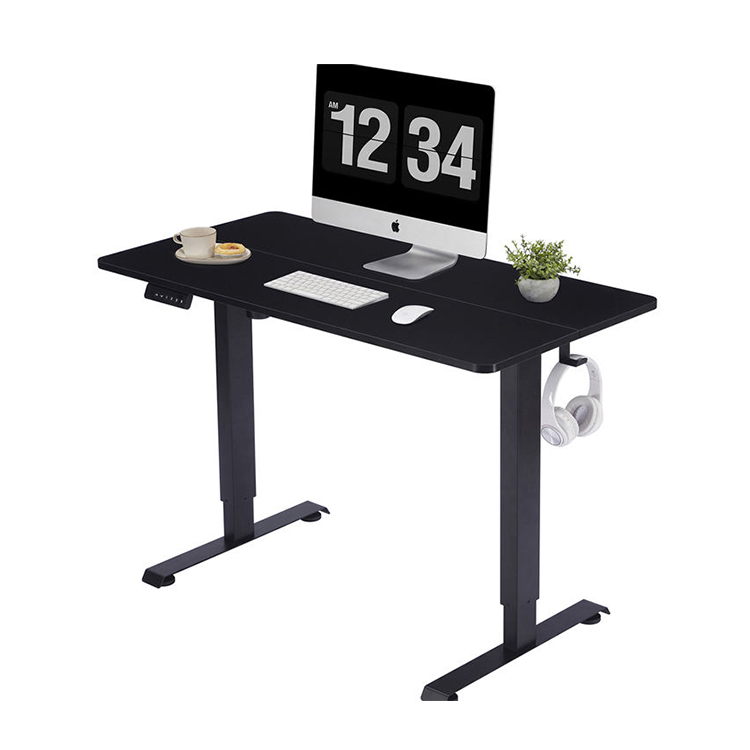From Sitting to Standing: How to Transition to a Standing Desk?
1. Start by gradually increasing your standing time.
When transitioning from a sitting to a standing desk, avoid standing for extended periods of time right from the start. Prolonged sitting has already accustomed your body to prolonged sitting, and standing for hours can cause discomfort, such as back pain and leg fatigue.
Suggestions:
Initial Transition: Start by standing for 5-10 minutes every hour. Set an alarm or reminder app to remind you to stand for a short while after every working hour.
Gradually Increase: As you adjust, increase your standing time daily, eventually working up to 30 minutes or more. Increase by 10-15 minutes each week until you can alternate between sitting and standing throughout the day.
2. Use an Adjustable Desk
If your desk doesn't have height adjustment, transitioning to a standing desk can be challenging. The ideal standing desk should be adjustable, either manually or electrically, allowing you to easily switch between sitting and standing positions.
Suggestions:
Opt for a desk with electric or pneumatic adjustment to minimize adjustments. Electric desks, which raise and lower with the touch of a button, are particularly suitable for those who frequently switch between sitting and standing. When adjusting your desk height, ensure it's slightly below eye level. This prevents you from slouching or tilting your head back, reducing stress on your cervical spine.
Add a small tray under your desk to store your mouse and keyboard, and ensure your elbows are naturally bent when using them.
3. Maintaining Proper Posture
Maintaining good posture when standing is crucial. Prolonged, improper posture can strain your back, spine, and cervical spine, ultimately leading to pain or discomfort.
Recommendations:
Feet flat on the floor: Keep your feet naturally shoulder-width apart to maintain a balanced center of gravity. Avoid placing too much weight on one foot.
Knee Bend: Keep your knees slightly bent to avoid locking your legs, which reduces stress on your lower back.
Hip Lean: When standing, focus on slightly leaning your hips forward, maintaining a natural S-curve at the waist.
Adjusting the monitor height: Ensure the top of the monitor is at eye level to avoid looking down or up at the screen. The screen should be parallel to your eyes to reduce neck strain.

4. Use an anti-fatigue mat
Standing for extended periods of time can cause foot fatigue, especially on hard surfaces. Anti-fatigue mats can effectively relieve this pressure and improve comfort.
Recommendations:
Choose the right anti-fatigue mat: Choose a thick, soft mat that reduces the impact on your feet while standing and provides more support.
Change your standing position regularly: Even with an anti-fatigue mat, standing for too long can still cause fatigue. Periodically, change your standing position or sit down to take a break.
5. Avoid continuous standing
Standing for long periods of time can also put a strain on the body, especially on the lower extremities and spine. Continuous standing can easily lead to leg swelling, fatigue, and even varicose veins.
Recommendations:
Alternate between sitting and standing: Switch between sitting and standing every 30 minutes or an hour. You can stand for 10-15 minutes, then sit down to rest.
Do simple stretches: Every hour while standing, perform a few minutes of leg and back stretches to mobilize joints and relieve stiffness and fatigue.
6. Exercise regularly
A standing desk is not a replacement for daily exercise. Regular exercise is key to maintaining good health. Standing only reduces sitting time during work; it doesn't completely eliminate the need for physical activity. Recommendations:
Lunch Break Walk: During your lunch break, go for a walk to stretch your legs and get your blood flowing.
Daily Exercise: Maintaining at least 30 minutes of daily exercise, such as brisk walking, running, or yoga, can strengthen your muscles and reduce the health problems associated with prolonged sitting.
Stretching: Spending a few minutes daily doing full-body stretches, especially focusing on your back and leg muscles, can prevent muscle stiffness from prolonged standing or sitting.
7. Adjust Your Work Environment
Adjusting your work environment is crucial for standing work, especially the placement of your desk, monitor, mouse, and keyboard. Ensure these devices are ergonomically positioned.
Recommendations:
Monitor Position: The monitor should be at eye level and within a comfortable viewing distance. Avoid having to look down or up at the screen.
Keyboard and Mouse Position: The keyboard and mouse should be positioned so that your elbows are at a 90-degree angle; avoid raising your arms or lowering them. Keep your forearms parallel to the ground.
Desktop Space: Keep your desk clutter-free and tidy so you can easily adjust your desk space.
8. Listen to your body's signals
Everyone's adaptation to standing varies. Your body may use pain or discomfort to let you know when you need to rest or adjust your posture. It's important to pay attention to these signals to avoid injury.
Suggestions:
Pay attention to discomfort: If you experience discomfort or pain in your back, neck, or legs, consider sitting down or adjusting your standing time.
Adjust your work style: Sometimes standing for extended periods may not be suitable for certain tasks (such as long periods of typing). In these cases, sitting down can be appropriate.
9. Use a standing desk to increase your work flow
While standing, you can try simple activities to increase your body's movement, improve your work efficiency, and avoid fatigue caused by being still.
Suggestions:
Move around: Use your standing time to move around, even trying small movements while taking calls or holding meetings.
Breathe deeply and relax: Practicing deep breathing and simple relaxation exercises while standing can improve your mental state and reduce stress.
10. Share your experience
Making the transition to a standing desk can be challenging. Sharing your experience with others and gaining their support and advice can help you stay motivated. Recommendations:
Team Support: Encourage colleagues to try standing desks together in the office. Group practice can sometimes improve efficiency and reduce frustration.
Social Sharing: Sharing your experiences and feelings about transitioning to a standing desk with those around you can both gain support and help others adapt.

 English
English русский
русский Español
Español Deutsch
Deutsch عربى
عربى
 0
0

















